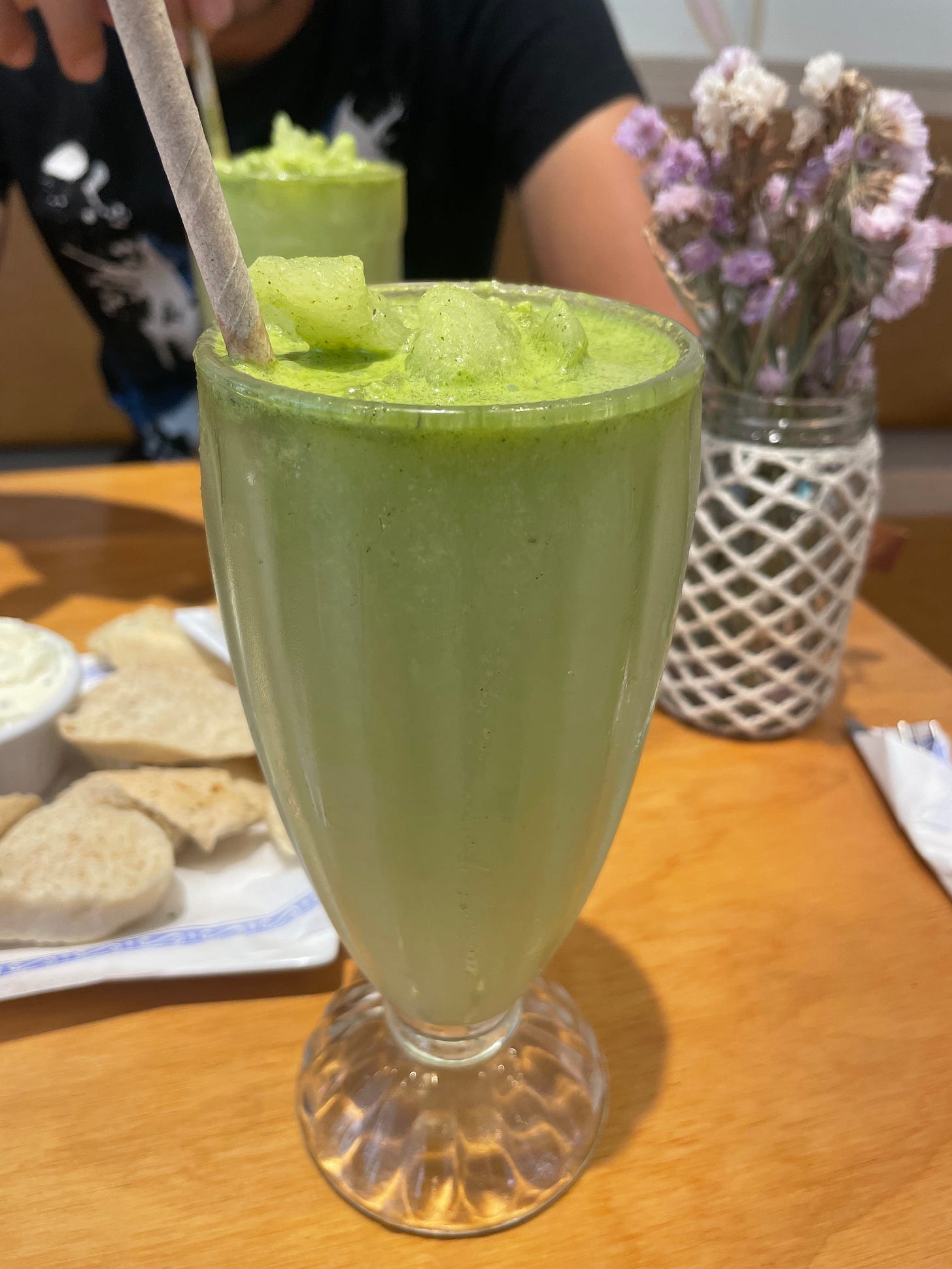Travel Digestivo: Buenos Aires
Launching Food People’s travel series in Argentina’s capital city
Hello there, Interested Eaters!
How do we, Food People, eat and engage with food when we travel?
Alas, your question will be answered as we embark on our latest series, the Travel Digestivo. We have decided to share our first impressions and observations in our travels as curious, interested eaters ourselves.
This is not a food tour through our travels, but rather a platform for sharing our post-adventure observations and musings. Think of it as a post-dinner amaro, a moment to digest and reflect on the fabulous “meal” we've experienced. It's a travel journal with a primary focus on food, offering insights into diverse food systems across the globe. We want to acknowledge our position as outsiders with only a short-term perspective and hope that these snapshots serve to spark conversation or deep-dives in the future.
Our inaugural destination? Buenos Aires, Argentina! So, buckle up and let's soar over to Buenos Aires together. Cheers to exploring the world, one bite at a time!
No doubt the food is incredible in Buenos Aires, and despite my eager appetite, I realize that I barely scraped the surface. From the moment I arrived, the exploration began, as I spoke in my broken Spanish (mixed with some Italian) to the taxi driver about his favorites in Argentinian cuisine. From parilla and empanadas, to the cakes, flan and alfajores, the range is overwhelming — and abbiocco inducing (a Roman word that perfectly elucidates that post-hearty meal sleepiness). It became more of a challenge than I expected to try all of these foods in the one week I was there.

While I did not conduct a research experiment during these travels (because I was on vacation for goodness sake!), I did try to keep my eyes open to the intrigue of a new place, observing any patterns or themes related to food systems. How and when do people eat? What is appearing consistently on menus? How are grocery stores structured and organized? Here’s what I observed:
Defy your preconceptions! Before heading on this adventure, several people cautioned me of the significant presence of meat in Argentinian diets (i.e. it would be hard to find dishes without it). Having been following my own rules of “no meat at home” (don’t miss the depth of this conversation in last week’s post), meat had taken a backseat in my diet. So, I was a bit concerned about how my stomach might manage this adventure. In the weeks before traveling, I started to incorporate a bit more meat into my diet so as to slowly readjust. However, Buenos Aires is a pretty darn big city — one with plentiful options, including its fair share of vegetables and fish in empanadas, tortas and on the grill. Surely, lots of (honestly incredible) meat, but no — that’s not your only option. Balance was (kind of) possible.
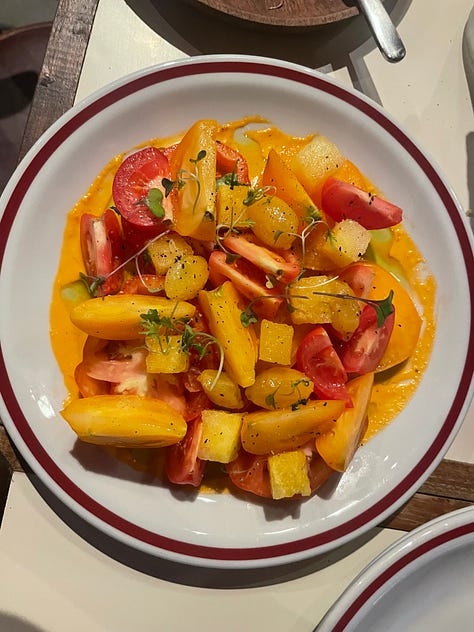
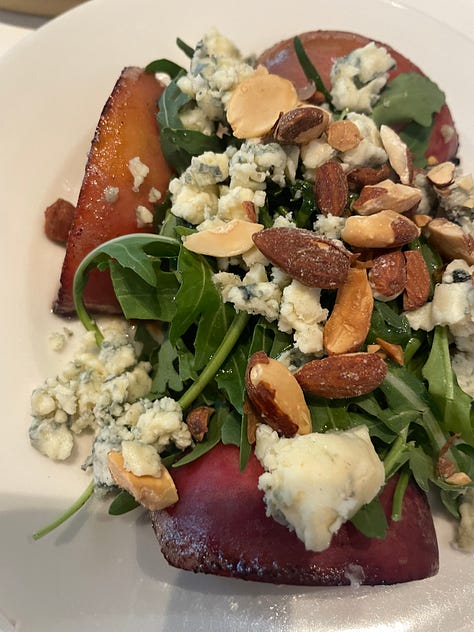
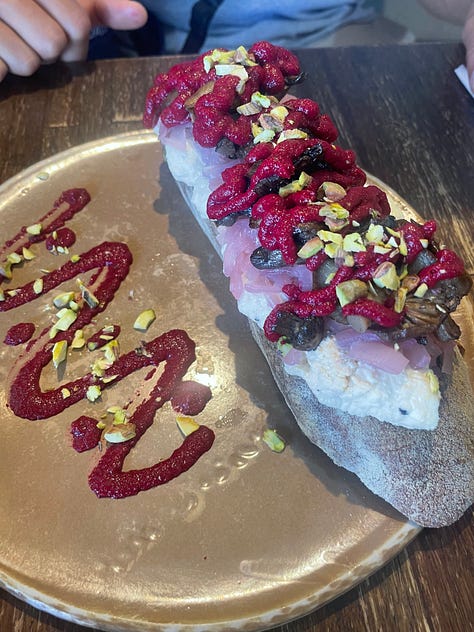
(No) more cheese please. Something that did surprise me more was the overwhelming quantities of oozing, melted cheese (often of the provolone variety) — from the morning cream cheese (and jam) on toast to the fugazzeta (Argentinian stuffed pizza) to the milanesa (pictured below) to several vegetable dishes (often ones that I thought might be going solo, ended up eloping with cheese as well).
You may be surprised to know that there is a significant Italian population in Argentina (around 47% percent!) following a period of mass migration that occurred at the turn of the twentieth century. This has certainly had an impact on the food, as I found myself often in a sea of Italian options from ravioli to pizza to lasagna. But to me, the fascinating part was the evolution into its own unique cuisine, as seen in these dreamy cheese-forward dishes like fugazzeta or milanesa.

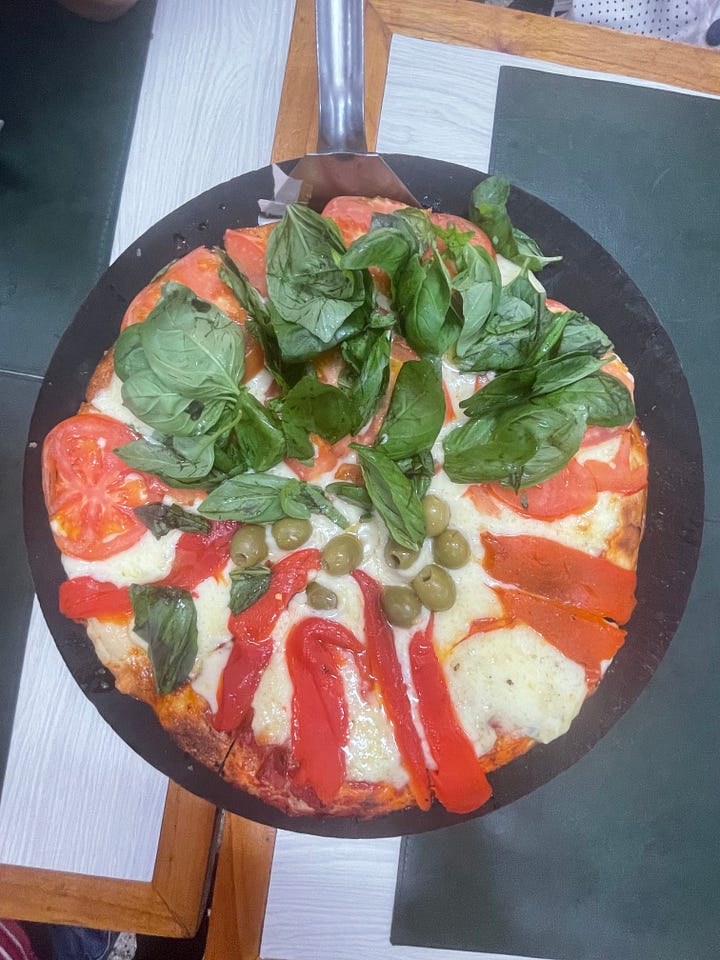
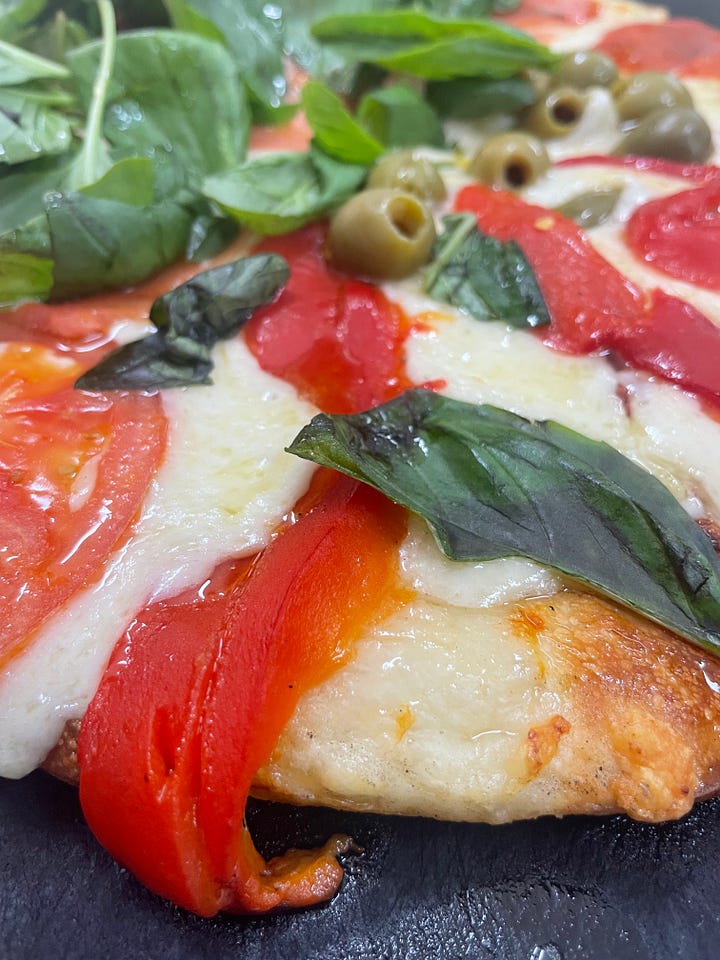
If there was cheese involved in the dish, it was never sparing. Probably because of this, I never actually managed to order the provoleta, a lingering fear of the cheese excess I might waste.
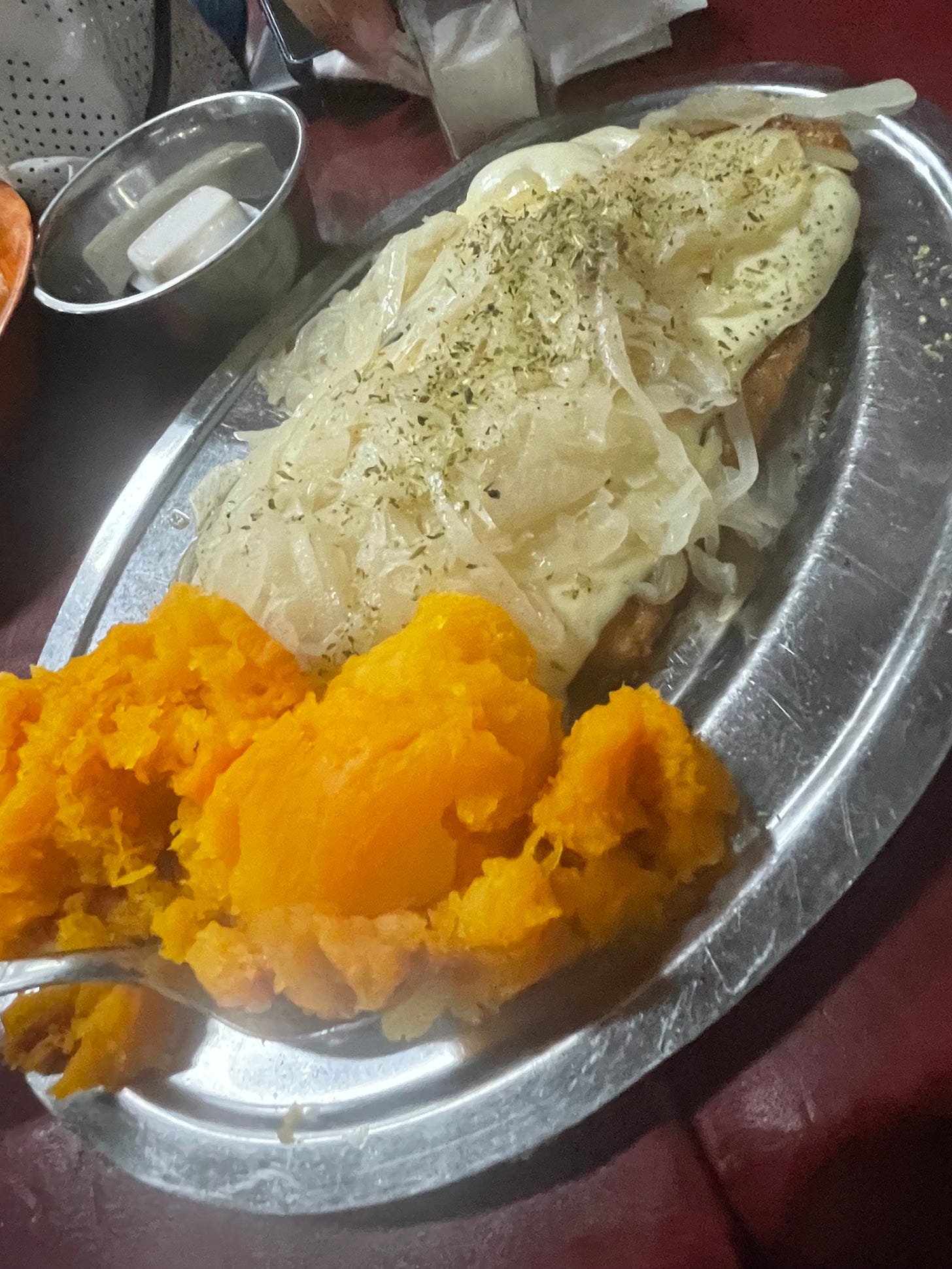
Go big & take it home: Portion size. One of the most unexpected realizations I had was the consistently generous portion sizes. I soon discovered that my challenge in ordering stemmed not only from my limited knowledge of the Spanish language, but also from my unfamiliarity with the quantity to expect. Everything was larger and more decadent than I imagined. Growing up in a handful of suburban and urban towns and cities on the east coast of the United States, portion sizes were always awfully large and geared toward overconsumption, sharing or leftovers. While one might expect an easy transition into the abundance on the plate, my partner and I consistently found ourselves over-ordering even with our large appetites.
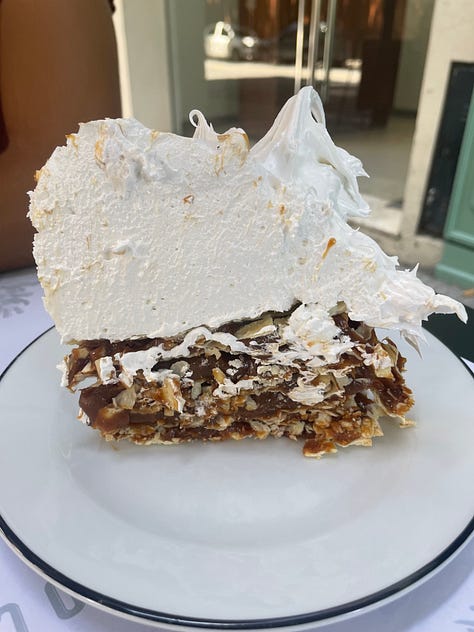
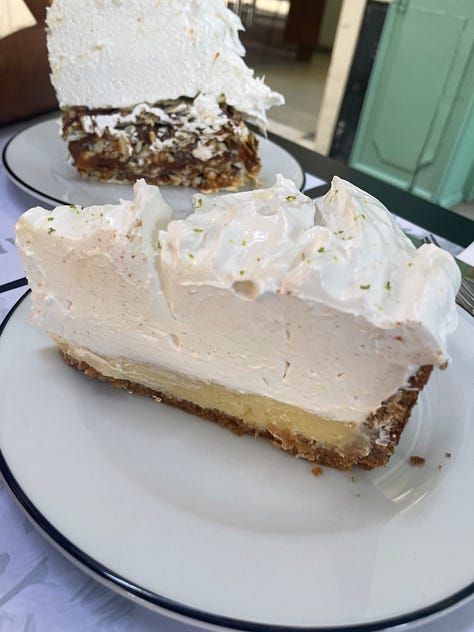
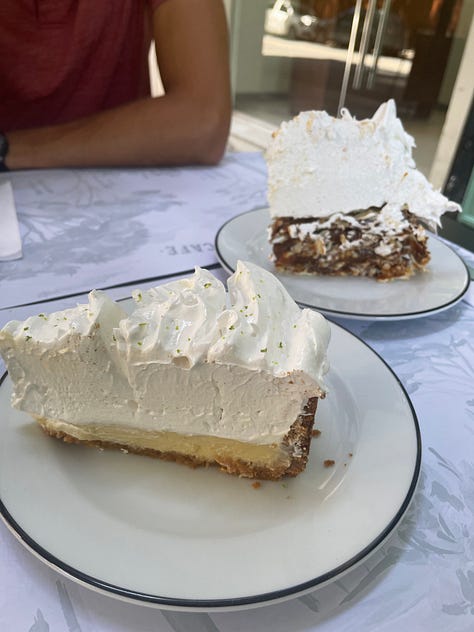
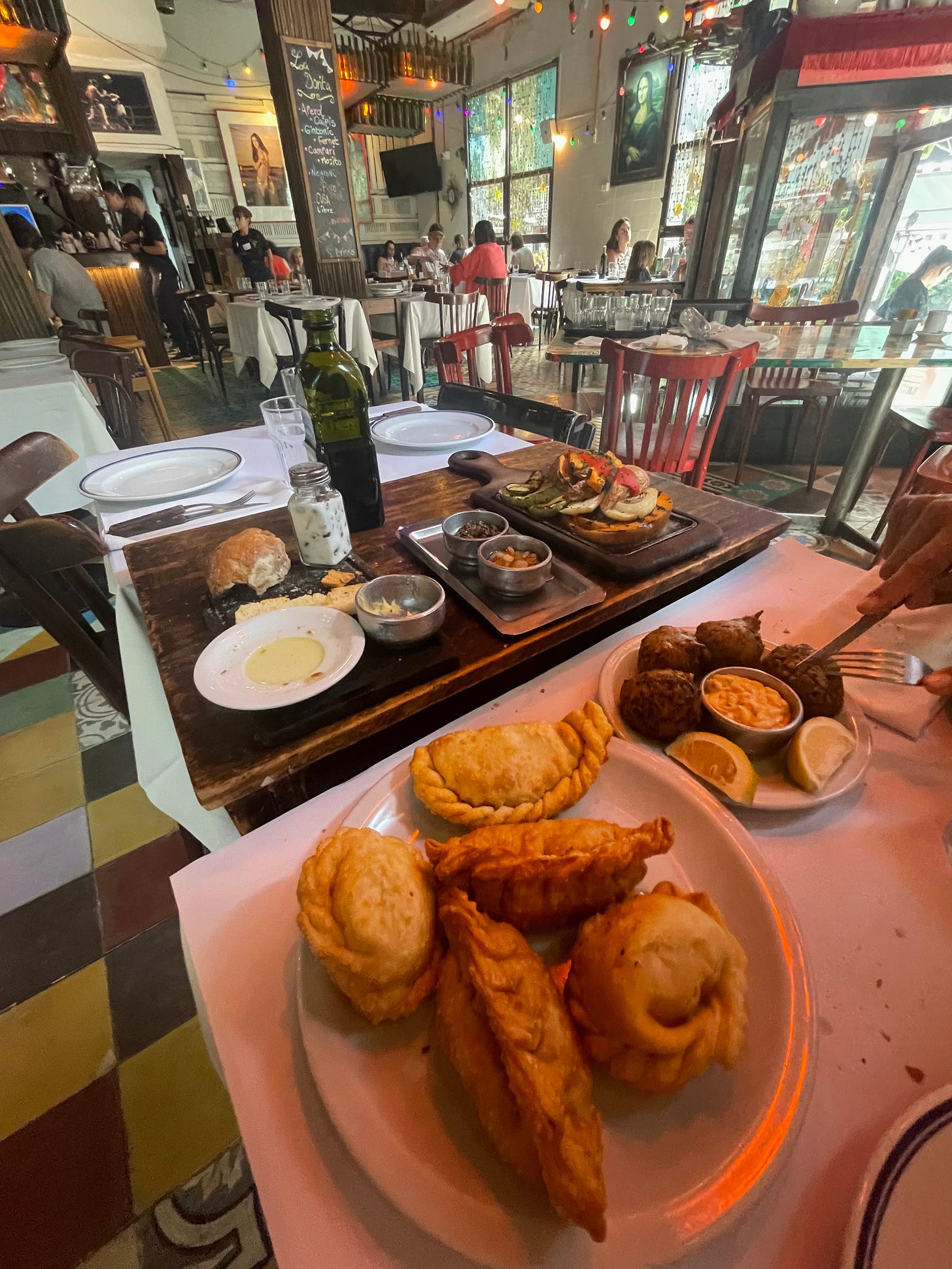
Warning Octagons: Nutritional labeling. After ordering a cup of coffee, alongside came a tiny package of two biscuits. While each were only slightly larger than the size of a quarter, they were covered with little black warning octagons. After some research, I learned that this is a fairly recent change in Argentinian policy (as of March 2022), used to “identify processed and ultra-processed products with excessive sugar, total fat, saturated fat, trans fat and sodium content” (PAHO) to encourage healthier eating and to decrease obesity and chronic non-communicable diseases.
I wondered, “How helpful are these labels?” — as I took a second to think before I took a bite of the famously known Cachafaz Alfajor, but alas, I still indulged and ate it…as one does on vacation.
It’s clear that with 140,000 deaths per year in Argentina caused by hyperglycemia, overweight, obesity and hypertension, that diets need to change. It’s not just food labeling either, as this policy also regulates ultra-processed foods in promotions, sponsorship, advertising and schools. While it’s too soon to analyze the impacts of this policy in Argentina, several Latin American countries (including Chile, Uruguay, Peru, Mexico, and Colombia) have already implemented this front-of-packaging labeling with seemingly positive impacts, such as a decrease in “high-in” food purchases in Chile and an overall increased consumer understanding of nutritional content in Mexico (as cited here and here).
Inflation & Inequality. With the recent change in government and the intense and rising inflation, it was very clear walking around the streets of Buenos Aires that many Argentinians are struggling. Several times, while having a quick lunch or afternoon coffee, my eye would catch someone diving into the huge community trash bins to investigate if there was anything worth eating inside.
We felt a significant amount of guilt, especially when we found ourselves paying very little (from a Western point of view, as the euro and the dollar went pretty far there), over-ordering and over-eating, to then see several people unable to afford even some of the cheapest food options. While you could say that we were supporting the local economy by dining at local restaurants and cafés, this dichotomy is perhaps an unavoidable aspect of the tourist-local dynamic. These observations bear a greater conversation on the importance of food access, including to nutritious and healthy food, and how this intersects with economic and other societal factors.
Drink it all in. I’ll end with this because it’s light, somewhat literally. The weighty, hot, humid air of Buenos Aires begged for constant and deliberate hydration. From my perspective, the limonada won the award for the perfect afternoon energizing refresher — without caffeine and alcohol. The key elements: the foam on the top, the mix-ins (often found fraternizing with ginger and mint), and probably most importantly, the acidity. The ideal sourness, beating out that sugary lemon Fanta that often sends you reeling with a migraine.
If (or when!) I return, I would prioritize participating in the daily ritual of mate drinking. A drink that is not meant to be ordered in a café, but rather requires you to take time to prepare and share. I'd say it energizes communities (both because it brings people together and is quite caffeinated!).
What a whirlwind week, jam-packed with quite the range of unbelievable food and drink! While I am wishing I ate more alfajores and took more time to explore the bread scene, I am already plotting my return. In my opinion, the best part of traveling is challenging your own reality or bubble — rethinking how you see the world and remembering how many people are in it… and how expansive food systems are. Until the next trip!
All photos are personal photos.







